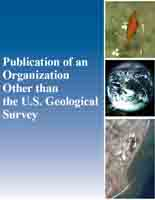Permafrost–wildfire interactions: active layer thickness estimates for paired burned and unburned sites in northern high latitudes
Links
- More information: Publisher Index Page (via DOI)
- Open Access Version: Publisher Index Page
- Download citation as: RIS | Dublin Core
Abstract
As the northern high-latitude permafrost zone experiences accelerated warming, permafrost has become vulnerable to widespread thaw. Simultaneously, wildfire activity across northern boreal forest and Arctic/subarctic tundra regions impacts permafrost stability through the combustion of insulating organic matter, vegetation, and post-fire changes in albedo. Efforts to synthesis the impacts of wildfire on permafrost are limited and are typically reliant on antecedent pre-fire conditions. To address this, we created the FireALT dataset by soliciting data contributions that included thaw depth measurements, site conditions, and fire event details with paired measurements at environmentally comparable burned and unburned sites. The solicitation resulted in 52 466 thaw depth measurements from 18 contributors across North America and Russia. Because thaw depths were taken at various times throughout the thawing season, we also estimated end-of-season active layer thickness (ALT) for each measurement using a modified version of the Stefan equation. Here, we describe our methods for collecting and quality-checking the data, estimating ALT, the data structure, strengths and limitations, and future research opportunities. The final dataset includes 48 669 ALT estimates with 32 attributes across 9446 plots and 157 burned–unburned pairs spanning Canada, Russia, and the United States. The data span fire events from 1900 to 2022 with measurements collected from 2001 to 2023. The time since fire ranges from 0 to 114 years. The FireALT dataset addresses a key challenge: the ability to assess impacts of wildfire on ALT when measurements are taken at various times throughout the thaw season depending on the time of field campaigns (typically June through August) by estimating ALT at the end-of-season maximum. This dataset can be used to address understudied research areas, particularly algorithm development, calibration, and validation for evolving process-based models as well as extrapolating across space and time, which could elucidate permafrost–wildfire interactions under accelerated warming across the high-northern-latitude permafrost zone. The FireALT dataset is available through the Arctic Data Center (https://doi.org/10.18739/A2RN3092P, Talucci et al., 2024).
Study Area
| Publication type | Article |
|---|---|
| Publication Subtype | Journal Article |
| Title | Permafrost–wildfire interactions: active layer thickness estimates for paired burned and unburned sites in northern high latitudes |
| Series title | Earth System Science Data |
| DOI | 10.5194/essd-17-2887-2025 |
| Issue | 17 |
| Publication Date | June 26, 2025 |
| Year Published | 2025 |
| Language | English |
| Publisher | Copernicus Publications |
| Contributing office(s) | Alaska Science Center, Geology, Minerals, Energy, and Geophysics Science Center, WMA - Earth System Processes Division |
| Description | 23 p. |
| First page | 2887 |
| Last page | 2909 |
| Country | Canada, Russia, United States |
| Other Geospatial | Arctic |


